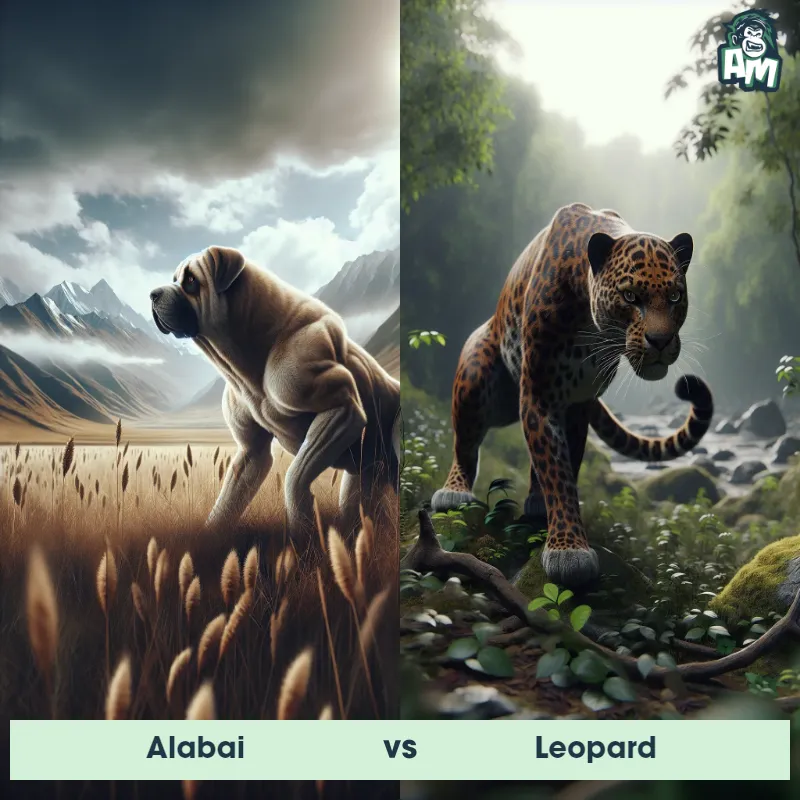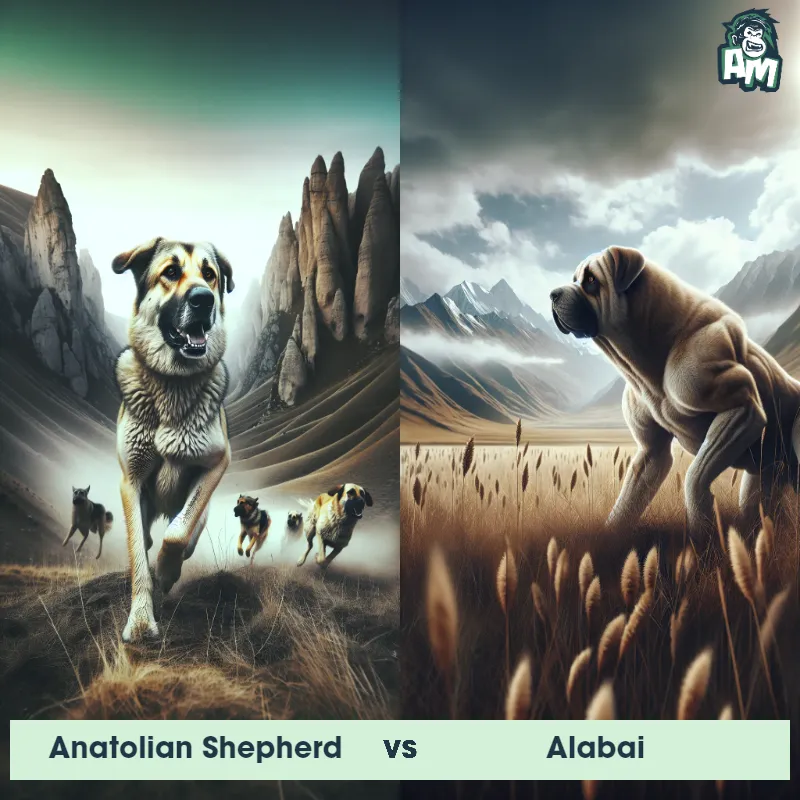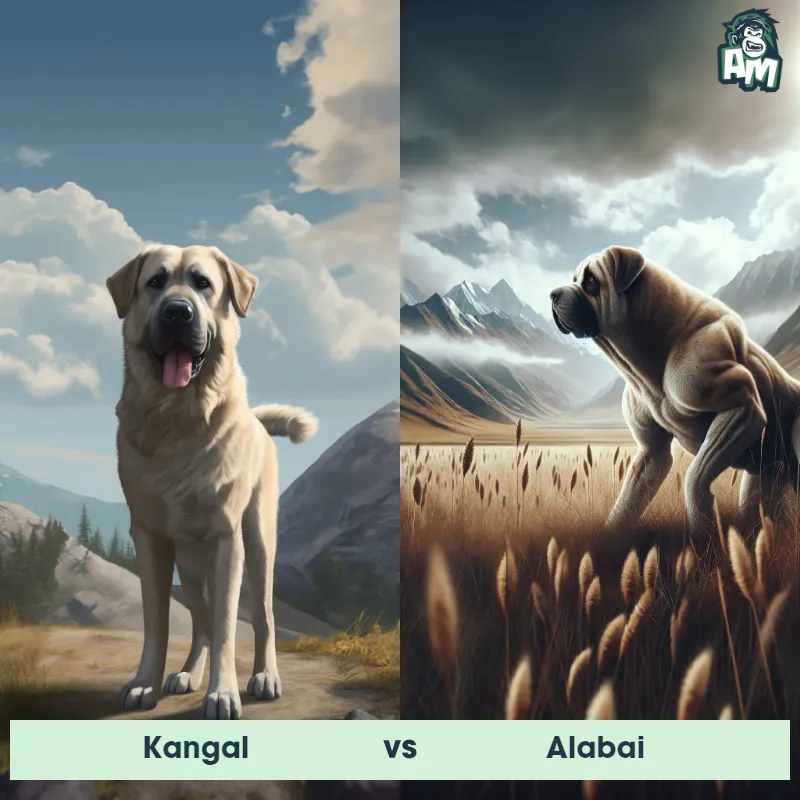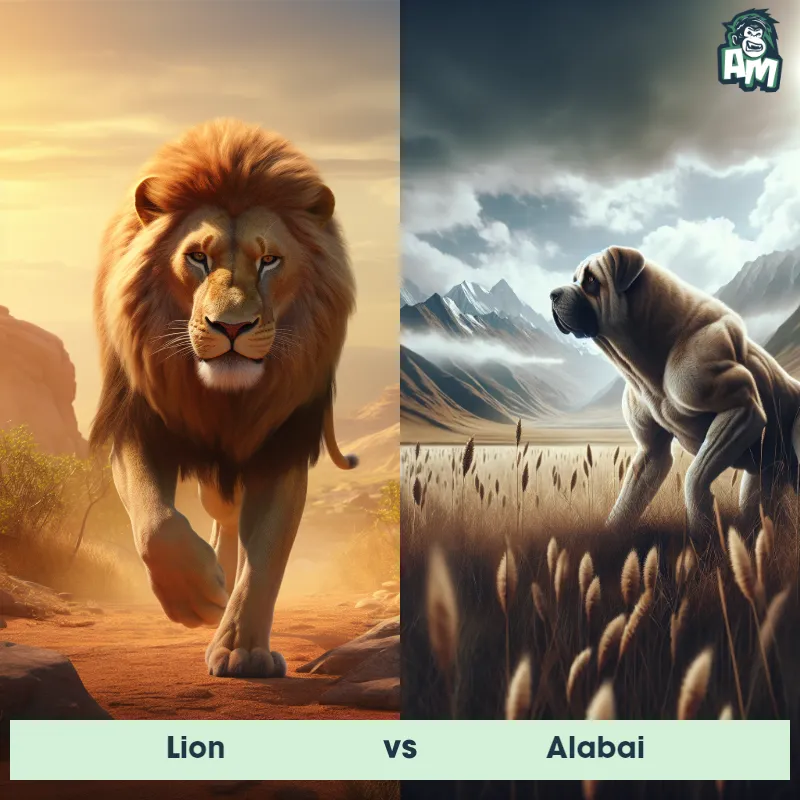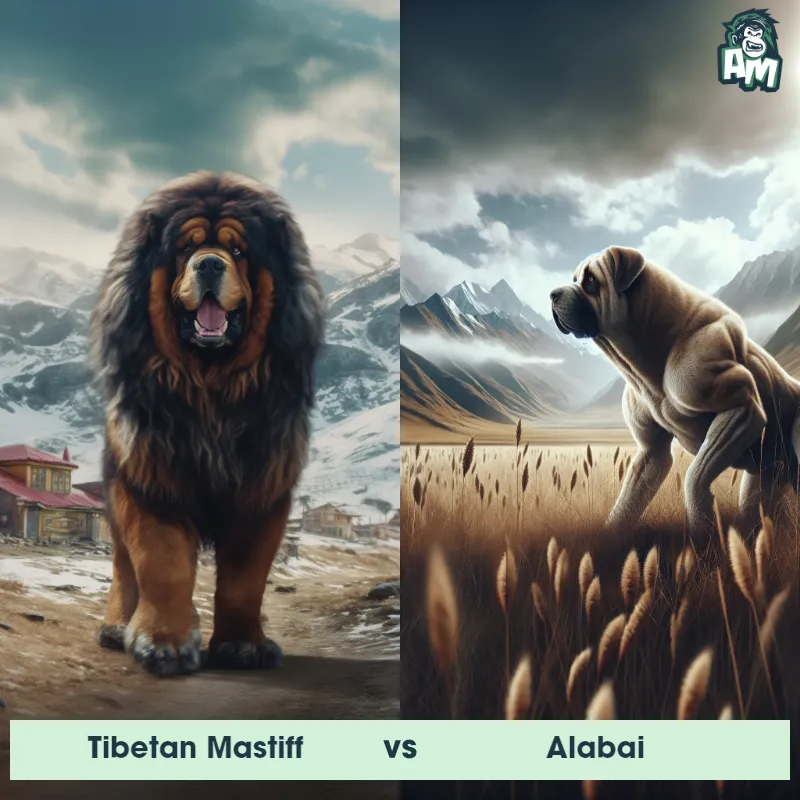The Alabai
The Alabai, also known as the Central Asian Shepherd Dog, is a large and powerful breed native to Central Asia. These dogs are known for their muscular build and strong physique, with males typically weighing between 110 to 176 pounds and standing between 25 to 32 inches tall at the shoulder. They have a thick double coat, which provides insulation and protection in harsh climates. The Alabai is known for its loyalty, intelligence, and protective nature, making it an excellent guard dog and family companion. They are also highly adaptable and can thrive in various environments, from arid desert regions to snowy mountainous areas.

| Alabai | |
|---|---|
| Size | Height: 70-75 cm (27.5-29.5 in) |
| Weight | Male: 50-65 kg (110-143 lbs) |
| Speed | 20mph (32km/h) |
| Key Strength | Powerful bite force and physical strength |
| Biggest Weakness | May lack agility in a one-on-one fight |
| Scientific Name | Canis lupus familiaris |
| Family | Canidae |
| Habitat | Domesticated, but historically used as livestock guardians in Central Asia |
| Geography | Native to Central Asia, primarily Kazakhstan, Kyrgyzstan, Turkmenistan, Tajikistan, and Uzbekistan |
| Diet | Carnivorous, primarily meat-based diet |
| Lifespan | 10 years - 17 years |

The Alabai
The Alabai, also known as the Central Asian Shepherd Dog, is a large and powerful breed native to Central Asia. These dogs are known for their muscular build and strong physique, with males typically weighing between 110 to 176 pounds and standing between 25 to 32 inches tall at the shoulder. They have a thick double coat, which provides insulation and protection in harsh climates. The Alabai is known for its loyalty, intelligence, and protective nature, making it an excellent guard dog and family companion. They are also highly adaptable and can thrive in various environments, from arid desert regions to snowy mountainous areas.
![[object Object] Gif](https://tenor.com/view/pfsf1968-gif-20239036.gif)
Fun Fact: The Alabai is known for its incredible stamina and endurance, which allows it to work for long periods without tiring.
| Alabai | |
|---|---|
| Size | Height: 70-75 cm (27.5-29.5 in) |
| Weight | Male: 50-65 kg (110-143 lbs) |
| Speed | 20mph (32km/h) |
| Key Strength | Powerful bite force and physical strength |
| Biggest Weakness | May lack agility in a one-on-one fight |
| Scientific Name | Canis lupus familiaris |
| Family | Canidae |
| Habitat | Domesticated, but historically used as livestock guardians in Central Asia |
| Geography | Native to Central Asia, primarily Kazakhstan, Kyrgyzstan, Turkmenistan, Tajikistan, and Uzbekistan |
| Diet | Carnivorous, primarily meat-based diet |
| Lifespan | 10 years - 17 years |
Alabai Matchups
We use AI to simulate matchups between the Alabai and other animals. Our simulation considers size, strength, and natural predatory behaviors to determine the most likely outcome.

Can't find the Matchup you want?
Create Your Own MatchupAlabai: Diet, Predators, Aggression, and Defensive Behaviors
What do Alabai eat?
The Alabai breed typically consumes a diet high in protein, which consists mainly of meat. This includes animal-based products such as raw meat, bones, organs, and occasionally vegetables or grains as supplementary sources of nutrition. Providing a balanced diet rich in quality protein is essential to maintaining the health and well-being of an Alabai.
Do Alabai have any predators?
Alabai dogs are known for their protective nature and impressive size, making them less susceptible to predators in their natural habitat. However, in some regions where wild animals pose a threat, Alabai has been known to encounter predators such as wolves, bears, and large felines. Their powerful build and assertive demeanor help deter potential threats, but it is essential for owners to ensure their safety in all environments.
Are Alabai aggressive?
Alabai dogs have a strong instinct to protect their territory, family, and belongings, which can sometimes come across as aggression. Alabai are known to be fiercely loyal and possessive, especially when Alabai sense a threat. Proper training, socialization, and consistent discipline are crucial in managing their assertive behavior and channeling it appropriately.
Do Alabai fight?
Alabai dogs have a history of being used as guard dogs and protectors, which often involves engaging in confrontations with intruders or threats. Their natural inclination to defend their territory and loved ones may lead to physical altercations if Alabai feel provoked or endangered. Proper training and supervision are essential in preventing unnecessary fights and ensuring the safety of both the dog and those around them.
How do Alabai defend themselves?
Alabai dogs are known for their courageous and fearless nature when it comes to protecting their territory or family. In threatening situations, Alabai may exhibit defensive behaviors such as barking loudly, standing their ground, and using their size and strength to intimidate potential threats. Their loyal and protective instincts make them formidable defenders, especially in situations where their loved ones are in danger.
What is the biggest weakness of Alabai in a fight?
Despite their powerful build and protective instincts, Alabai dogs have specific weaknesses that can be exploited in a fight. Their size and strength can sometimes lead to overconfidence, making them vulnerable to faster and more agile opponents. Additionally, their protective nature may cause them to overlook potential dangers or strategies used by adversaries. Proper training, socialization, and supervision are essential in maximizing their strengths and minimizing their weaknesses in confrontational situations.
Fun Fact: Despite its large size, the Alabai possesses great agility and quick reflexes, making it capable of swift movements and excellent coordination.
Fun Fact: The Alabai has a rich history as a working dog, traditionally used by nomadic people for guarding livestock and dwelling sites, as well as protecting against predators such as wolves and bears.



